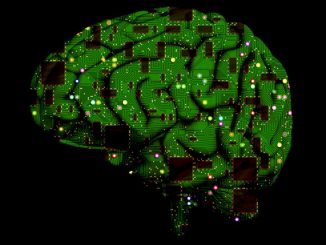
A trio of roboticists at the University of Tokyo have designed two of the most advanced humanoid robots yet.
Thanks to their human-inspired musculoskeletal structures and extreme flexibility, the robots, named Kengoro and Kenshiro, can engage in a number of impressive human-like actions like sit-ups, push-ups, and even stretches. However, the most surprising aspect is their ability to exercise and even break a sweat.
The machinery that allows these tendon-driven robots to more accurately mimic a human heats up, requiring water to circulate through the robot’s special porous aluminum frame to cool it. This allows the heated water to escape as vapor through the frame’s pores to accomplish the cooling.
The video below shows Kengoro, the most advanced of the two humanoid robots, doing crunches, neck stretches, calf raises and even hit a badminton birdie among other things. The Japanese roboticists, whose work was published recently in the peer-reviewed journal Science Robotics, claim Kengoro has 6x the degree of freedom of traditional humanoids and is able to move more of its parts in more human-like ways compared to other robots.
“Our intent is to design a humanoid based on human systems— including the musculoskeletal structure, sensory nervous system, and methods of information processing in the brain—to support science-oriented goals, such as gaining a deeper understanding of the internal mechanisms of humans,” the trio writes in their paper.
It’s perhaps counter-intuitive that engineers have created robots like Kengoro and Kenshiro — whose joints and collection of muscles mimic very closely those in the human body — to gain a better understanding of how our own bodies really work. As these robots get more sophisticated, the roboticists believe ultra-lifelike bots may help advance the study of the human body in a number of ways, including being used to help grow human tissue for medical transplants.
“If a humanoid can replicate human movements, then the resulting muscle contribution analysis or sensory data obtained during motion will benefit athletes or sports trainers,” the trio writes, adding that ”human-shaped robotic limbs are also expected to be used in other fields, such as for artificial limbs or teleoperated human agents.”
Another thought being discussed is that robots like Kengoro and Kenshiro can be turned into crash-test dummies since their mobility could provide a more human-like response to collisions than standard dummies.
While advancements in artificial intelligence and robotics will keep bringing the stuff of science fiction closer to reality, at this point, there is no telling where the combination of these rapidly advancing technologies will eventually land us. That said, one thing is for certain: humanoid robots like Kengoro and Hanson Robotics’ Sophia whose aim is to replicate every day human functions, are here to stay, and with time they will only get smarter and more human-like.
- Bulenox: Get 45% to 91% OFF ... Use Discount Code: UNO
- Risk Our Money Not Yours | Get 50% to 90% OFF ... Use Discount Code: MMBVBKSM
Disclaimer: This page contains affiliate links. If you choose to make a purchase after clicking a link, we may receive a commission at no additional cost to you. Thank you for your support!




Leave a Reply